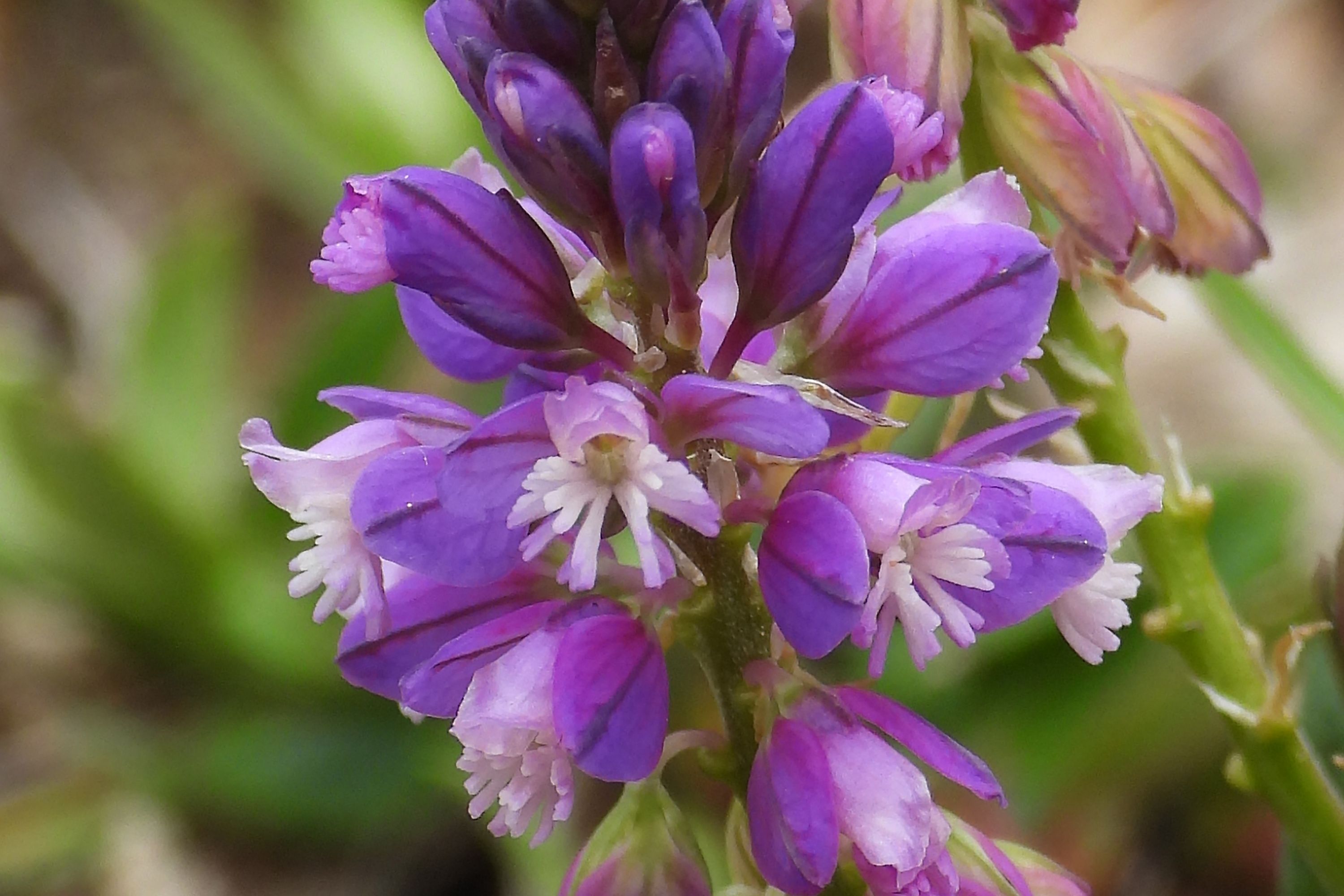Lewton'S Milkwort
(Polygala lewtonii)

Description
Polygala lewtonii is a rare species of flowering plant in the milkwort family known by the common name Lewton's polygala, or Lewton's milkwort. It is endemic to Florida in the United States, where it is limited to the central ridge of the peninsula. There are about 49 occurrences of the plant remaining. Most occurrences contain very few plants. The species is threatened by the loss and degradation of its habitat. This is a federally listed endangered species of the United States. The plant is a short-lived perennial herb producing erect, fleshy stems from the top of its taproot. The stems grow up to 20 centimeters tall. The leaves are alternately arranged and overlapping, with a number of small leaves in the axil of one larger leaf. They are linear to spatula-shaped and about a centimeter long. The top of each stem is occupied by a short inflorescence of flowers. There are three types of flowers on this plant. The most obvious is the chasmogamous type borne in the inflorescence on the stem. These are each half a centimeter long with pink winglike sepals and three smaller tufted pink petals at the center. The second type of flower is cleistogamous and borne at the base of the plant. These do not open, but self-pollinate. These flowers, which occur at the leaf axils, are rare. The third type of flower is a cleistogamous, unopening type that remains underground. These are borne on a stalk up to 40 centimeters long which is located just below the surface of the soil. They are white in color, and also self-pollinate. The very uncommon mode of reproduction characterized by aboveground chasmogamous flowers and belowground cleistogamous flowers is called amphicarpy and it is known from fewer than 100 plant species. The different types of flowers may occur at different times of the year. This plant grows on the sandhills of Central Florida and the transition between sandhill and Florida scrub. The land is dominated by longleaf pine, turkey oak, and other oaks. It can also be found in recently cleared areas such as the dry, open clearings around power lines. The substrate is yellow sand. Other endangered plant species in the habitat include Warea amplexifolia, Ziziphus celata, Prunus geniculata, and Nolina brittoniana.
Taxonomic tree:







